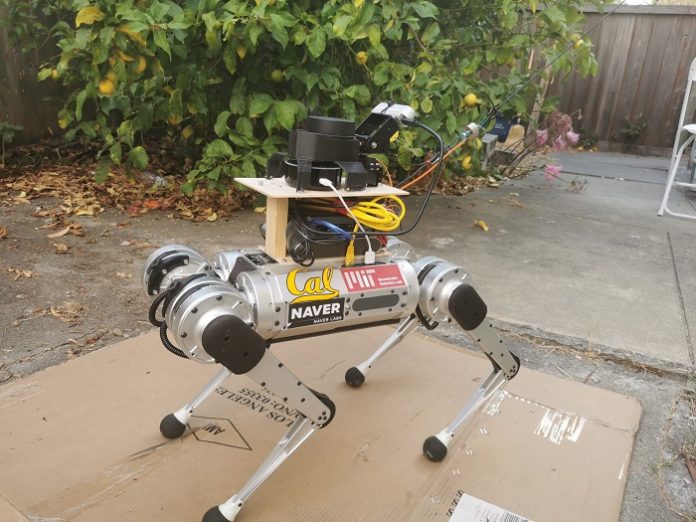Guide dogs, dogs that are trained to help humans move through their environments, have played a critical role in society for many decades. These highly trained animals, in fact, have proved to be valuable assistants for visually impaired individuals, allowing them to safely navigate indoor and outdoor environments.
Researchers at the University of California Berkeley’s Hybrid Robotics Group have recently created a quadrupedal robot with a leash that could take on the role of a guide dog. This robot can help humans safely navigate indoor environments without crashing into objects, walls, and other obstacles.
A well-behaved guide dog usually needs to be selected and trained individuals. In addition, the skills from one dog cannot be transferred to another one. This makes training guide dogs both time-consuming and labor-intensive, and the process not being easily scalable. On the contrary, the algorithms developed on one robotic guide dog can be easily deployed to another robot.
Quadrupedal robots, robots with four legs, have become increasingly sophisticated over the past few years. Many of these robots have also become more affordable and easier to fabricate on a large scale. As quadrupedal robots resemble dogs both in shape and size, they could be ideal substitutes for guide dogs and might be easier for humans to accept into society than other robotic systems.
The researchers decided to pursue the use of quadrupedal robots as guide dogs for visually impaired people. This guide dog is based on a small quadrupedal robot called the Mini Cheetah, equipped with a 2D LiDAR to sense the environment, a camera on a gimbal to track the position of the human being led, a leash to guide people, and a force sensor on the leash to measure the force being applied by the human / on the human.
Most previously developed systems for guiding blind individuals are based on rigid robotic arms that detect obstacles and help humans to circumvent them. The robotic guide dog created by Li and his colleagues, on the other hand, is attached to a flexible leash that can be either taut (i.e., stretched or pulled tight) or slack (i.e., loose). The use of a leash instead of a rigid structure enables greater flexibility in the combined movements and positions of the robot-human ‘team’ while navigating a given environment.
In addition to creating the new robotic guide dog, Li and his colleagues developed a hybrid physical human-robot interaction model that describes the dynamic relationships between the robotic dog and a human user during operation. Using this model, the researchers then developed a reactive planner that can switch between taut and slack leash modes to guide human users most effectively in confined spaces.
For example, when the robot-leading-human system gets into a narrow space, like a corner of a corridor, the robot can first let the leash go slack. This enables the robot to reposition and reorient itself without directly influencing the pose of the human. Following this, the robot can then let the leash go taut to lead the human through this confined region.
The team evaluated the system they developed in a series of real-world experiments in which the robotic guide dog had to guide a blindfolded person to a specific location while avoiding accidents and collisions with nearby obstacles. The results of these tests were highly promising, as the robot successfully guided participants to the desired location without any collisions. The researchers’ robotic guide dog, which also comes with an integrated sensor suite and with path-planning algorithms, could thus eventually help blind individuals to safely navigate cluttered indoor environments.
The use of a leash required us to develop a hybrid planner that exploited the taut/slack characteristics of the leash to move the robot-human team through confined spaces. They are now looking into enabling our robotic guide dog to help people navigate more complex outdoor environments and also to help visually-impaired people to navigate intersections with traffic lights.








